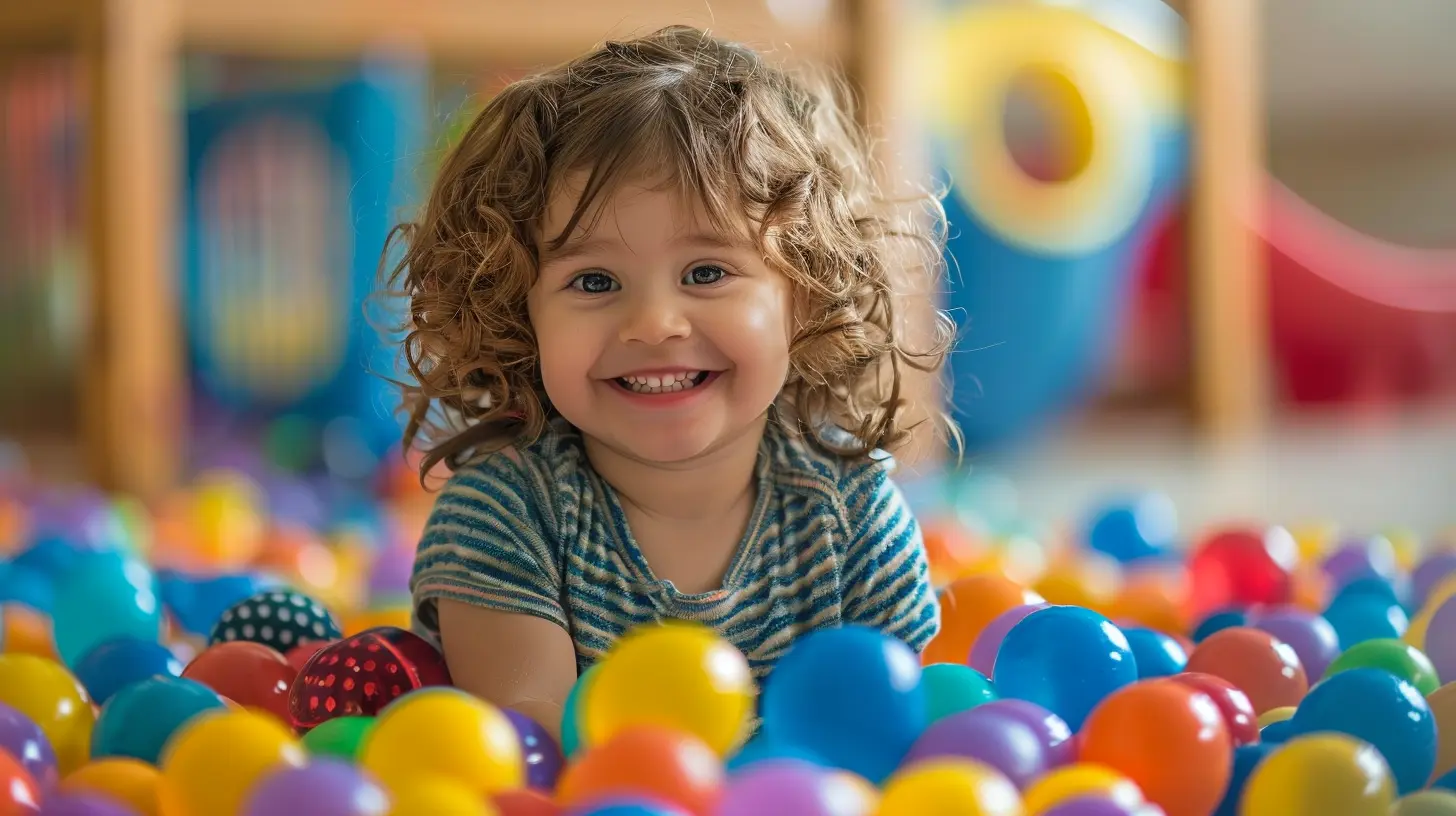Creating a Safe Space for Your Child’s Emotions
17 July 2025
Let’s face it—being a parent isn’t easy. We juggle a million things, from packed lunches to bedtime routines, and somewhere in between, we’re supposed to help our kids navigate their big, messy emotions. Not exactly a walk in the park, right?
But here’s the truth: emotional safety is just as important as physical safety. We babyproof our homes, install car seats properly, and feed our little ones healthy meals. Why not give their hearts and minds the same level of care?
In this post, we’re going to chat about what it really means to create a safe emotional space for your child—one where they can cry without shame, express anger without punishment, and feel truly seen and heard. So grab your coffee (or tea!), get comfy, and let’s dig into the heart of parenting.
Why Emotional Safety Matters
Imagine you had a long, rough day and someone just said, “You're overreacting” when you started venting. Ouch, right? Now think about how that feels to a child who hasn’t even figured out how to name their emotions yet.When kids feel emotionally safe, they thrive. Emotional safety builds:
- Confidence: Kids are more likely to try new things.
- Resilience: They bounce back from failures or mistakes.
- Connection: They feel close to their caregivers.
- Communication skills: They learn how to express themselves.
Emotional safety is the foundation for healthy mental development. It's like the emotional bubble wrap every child needs. Without it, they can feel unsure, anxious, and even withdrawn.
Start With You: Be the Safe Harbor
We can’t pour from an empty cup, can we? Before we even begin to help our kids, it’s important to recognize and manage our own emotions.Take a second and ask yourself:
- How do you react when your child throws a tantrum?
- Do you feel triggered by certain behaviors?
- Are you calm or do you lose your cool?
It’s okay. We all have our moments. What matters is not being perfect—but being present. Kids don’t need flawless parents. They need us to be calm anchors in the middle of their emotional storms.
Practice Emotional Awareness
If you’ve ever snapped at your child, then instantly regretted it (who hasn't?), it might be time to build a little emotional awareness.Try this simple habit: Pause. Breathe. Respond.
That few seconds of breathing can make the difference between reacting from frustration and responding with empathy.
Listen Like It Matters (Spoiler: It Does)
Listening is more than just hearing words. It's about tuning in—like really tuning in—to the emotions underneath.Ever heard your child say, “I hate you!” or “You’re the worst!” in a moment of anger? It stings, but those words probably aren’t about you. They’re a cry for help, a release valve for feelings they can’t explain.
Here’s what you can do:
- Get down on their level: Eye contact makes all the difference.
- Stay calm: Don't take their words personally.
- Reflect feelings: "You're really upset right now. Want to talk about it?"
Kids need to know they’re being heard, even when they’re at their worst. Especially then.
Validate Without Fixing
You don’t always have to fix things. Sometimes just saying, “That sounds really hard,” is enough.Think of yourself as their emotional mirror. You reflect what they’re feeling so they can begin to understand it.
Let Emotions Be What They Are
Many of us grew up being told not to cry, not to talk back, not to get angry. Sound familiar?We were taught to stuff it down, put on a brave face, and move on. But suppressed emotions don't go away—they just pop up later, messier than before.
So when your kid’s feelings come out sideways—whether it's a tantrum in the cereal aisle or teary eyes at bedtime—try this:
- Acknowledge the emotion: “You're feeling really sad right now.”
- Permit the expression: “It’s okay to feel that way.”
- Guide the behavior: “It’s okay to be mad, but we don’t hit.”
Letting emotions exist teaches children they are natural, not dangerous or shameful. Emotions are messengers, not monsters.
Create a Safe Environment (Physically & Emotionally)
Feelings don’t just pop up in a vacuum. Environments matter.You can create a cozy, emotion-friendly space by:
Having an Emotion Corner
A designated corner with soft pillows, fidget toys, calming books, or even a journal can give kids a peaceful spot to self-soothe.It’s not a punishment—it’s a “feelings break.” Think of it like a timeout, but with love and calm, not isolation or shame.
Setting Predictable Routines
Routines create security. When kids know what to expect, they feel in control. That kind of consistency is emotionally grounding.Meal times, bedtime rituals, even a “talk about your day” moment—it all adds up to a life that feels safe and stable.
Use Tools to Teach Emotional Literacy
Wouldn’t life be easier if our kids could just say, “I’m feeling overwhelmed and need some space”?Well... they can. But it takes time, and it starts with emotional literacy—that's the ability to recognize, name, and communicate feelings. Here’s how to build it:
Use Feeling Charts
These colorful emotion wheels or charts are like a beginner’s guide to the emotional world. Use them to help your child point out what they’re feeling.Read Stories Together
Children’s books that talk about feelings are subtle teachers. When characters go through emotional journeys, kids often make connections to their own.Model It Yourself
Say things like:- “I’m feeling frustrated because the car won’t start.”
- “I’m sad that the day is over, but I loved spending it with you.”
When you name your emotions, you give your child the vocabulary and confidence to do the same.
Set Boundaries with Love
Emotional safety doesn’t mean letting everything slide. In fact, healthy boundaries are part of what makes a child feel secure.Think of boundaries like the railings on a bridge—they let your child explore without falling.
Here’s how to do it lovingly:
- Be clear and consistent: “I know you’re angry, but we don’t hit.”
- Follow through without shame: “I’m going to help you calm down so we can talk.”
- Offer choices when possible: “You can talk about it now or after dinner.”
Discipline, when done respectfully, doesn’t break emotional safety—it reinforces it.
Be Their Safe Place, Not Their Judge
This one’s big. If your child fears being scolded or dismissed, they’ll shut down emotionally. But if you're a soft place to land, they’ll open up.Here’s what helps:
- Avoid sarcasm or shame.
- Separate behavior from identity. (“That was a poor choice” vs. “You’re a bad kid.”)
- Ask, don’t accuse. (“What happened?” vs. “Why did you do that?”)
Remember, parenting isn’t about control; it’s about connection.
Be the person they can come to when they mess up, fall apart, or feel lost. Not the person they fear disappointing.
Repair and Reconnect After the Blowups
Even the best parents lose it sometimes. We yell. We say things we wish we hadn’t. We slam cabinet doors.Good news? It’s not about being perfect. It’s about repair.
After a rough patch, go back and say:
- “I’m sorry I yelled. I was feeling overwhelmed, but that’s not your fault.”
- “What you were feeling mattered, and I should’ve listened better.”
When we apologize to our kids, we model humility, emotional intelligence, and the power of reconnection.
Playing is Healing
Never underestimate the power of play. It's how kids process emotions, work through stress, and feel close to us.Play gives them control in a world where so much is decided for them.
Try:
- Role-playing with dolls or action figures (“What should the bunny do when he’s scared?”)
- Drawing emotions
- Playing together without an agenda
This isn’t just fun—it’s emotional gold.
Final Thoughts: It’s a Journey, Not a Perfect Science
Honestly? There’s no one way to create emotional safety. You’ll stumble. Your child will challenge you (Oh, yes they will!). But every time you choose connection over correction, you’re building trust.So, the next time your child throws a fit or shuts down, take a deep breath and remember—they’re not giving you a hard time. They’re having a hard time.
You’ve got this. And more importantly, they’ve got you.
all images in this post were generated using AI tools
Category:
Emotional DevelopmentAuthor:

Maya Underwood
Discussion
rate this article
1 comments
Echo Perez
Feelings first, fears later.
July 27, 2025 at 2:38 AM

Maya Underwood
Absolutely! Prioritizing feelings fosters openness and trust, allowing children to express themselves without fear.


